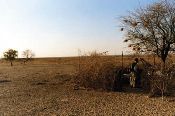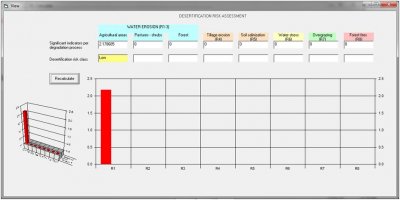| Evaluating the desertification risk assessment tool with local experimental results |
 |
|
Author: Victor Jetten
Introduction
Also the problems of soil erosion and soil degradation are caused by the Mediterranean type of climate (heavy rainfall in winter) and inappropriate land management practices. Experiments were carried out on the experimental farm to decrease surface runoff and soil losses and to improve soil water availability for growing crops.
Desertification indices
Conclusions
|
Study sites

Acknowledgement
The DESIRE project was
|
DESIRE brought together the expertise of
26 international research institutes
and non-governmental organisations.
This website does not necessarily
represent the opinion of the
European Commission. The European
Commission is not responsible for
any use that might be made of the
information contained herein. 

